Send SMS using Workflow Rules
Using the workflow rules, Kaleyra.io allows you to send SMS alerts for actions to leads, contacts, or accounts in Zoho CRM. The SMS is triggered when conditions are met based on your configured workflow rules to notify the end customers (leads, contacts, or accounts).
The topics contain the following sections:
Configure Workflow Rules and Send SMS
You can configure the workflow rules for different conditions and an SMS will get triggered for your set condition to leads, contacts, or accounts.
Use case: In this procedure, the workflow rule is created for the lead. Whenever a new lead is created an SMS is sent to new leads provided the condition that the first name contains John, using the Kaleyra SMS service.
To configure workflow rules and send SMS, perform the following steps:
- Sign in to your Zoho CRM account.
- On the right top menu bar, click the Settings (gear) icon.
The Setup page appears.
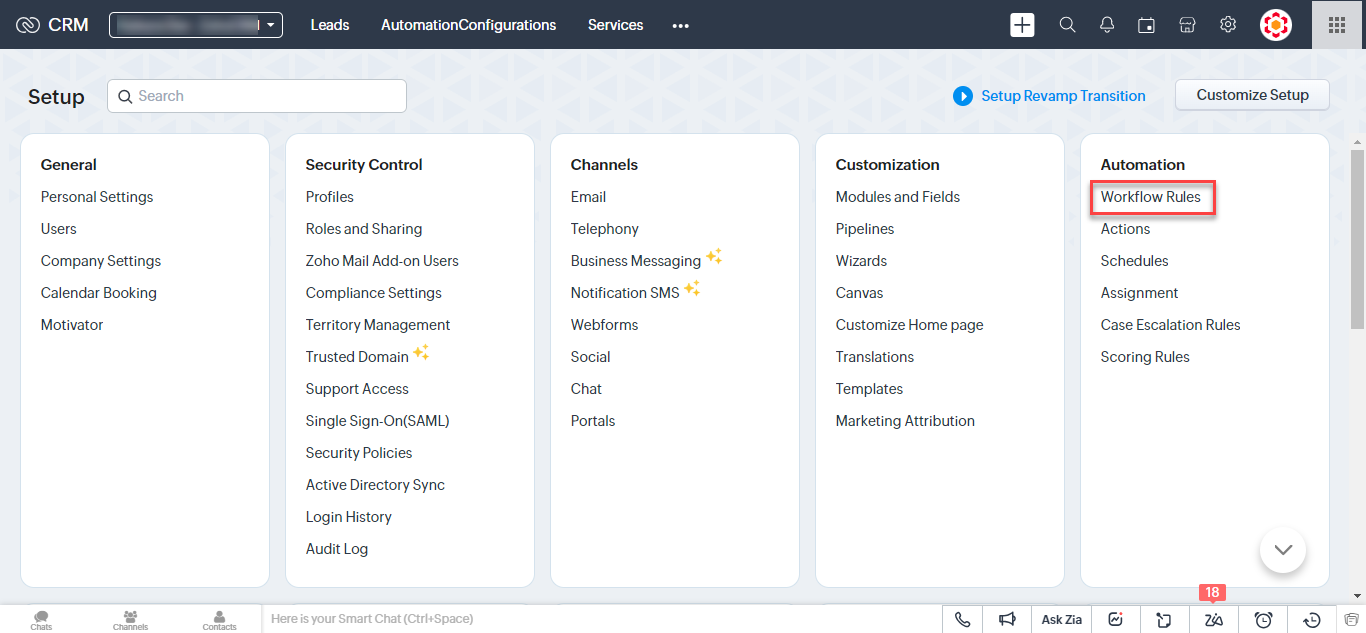
- In the Automation section, click Workflow Rules.
The Rules tab detail appears.
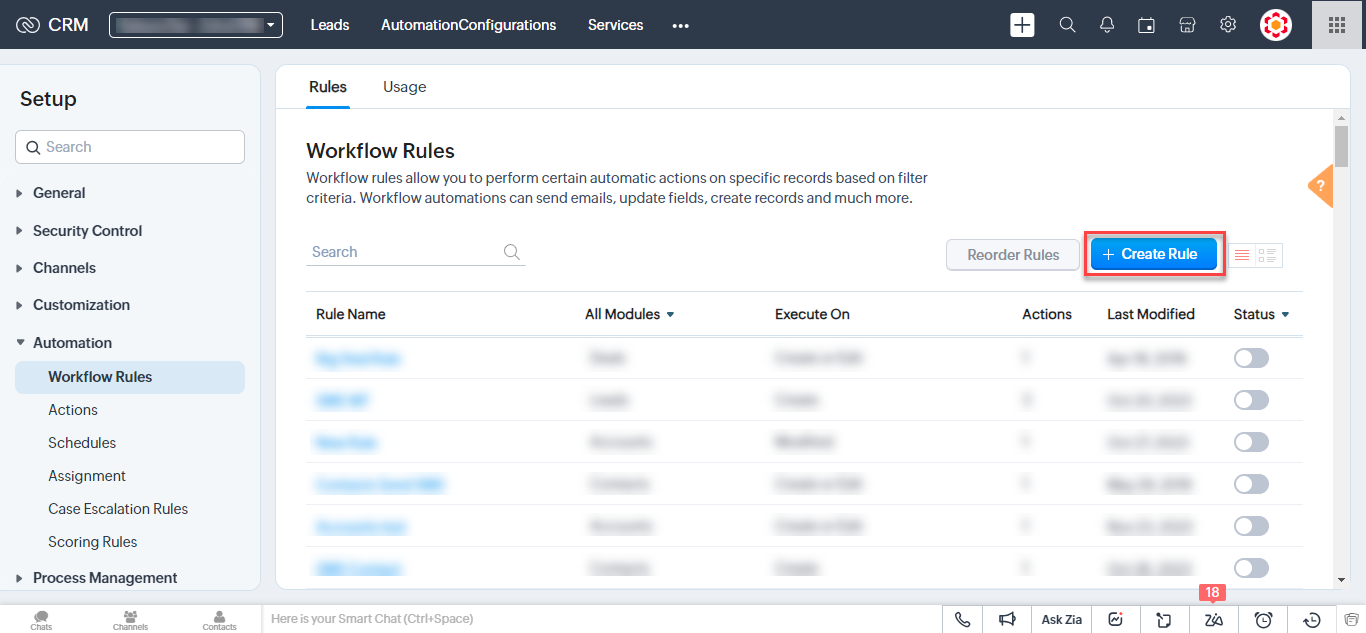
- Click + Create Rule.
The Create New Rule pop-up appears.
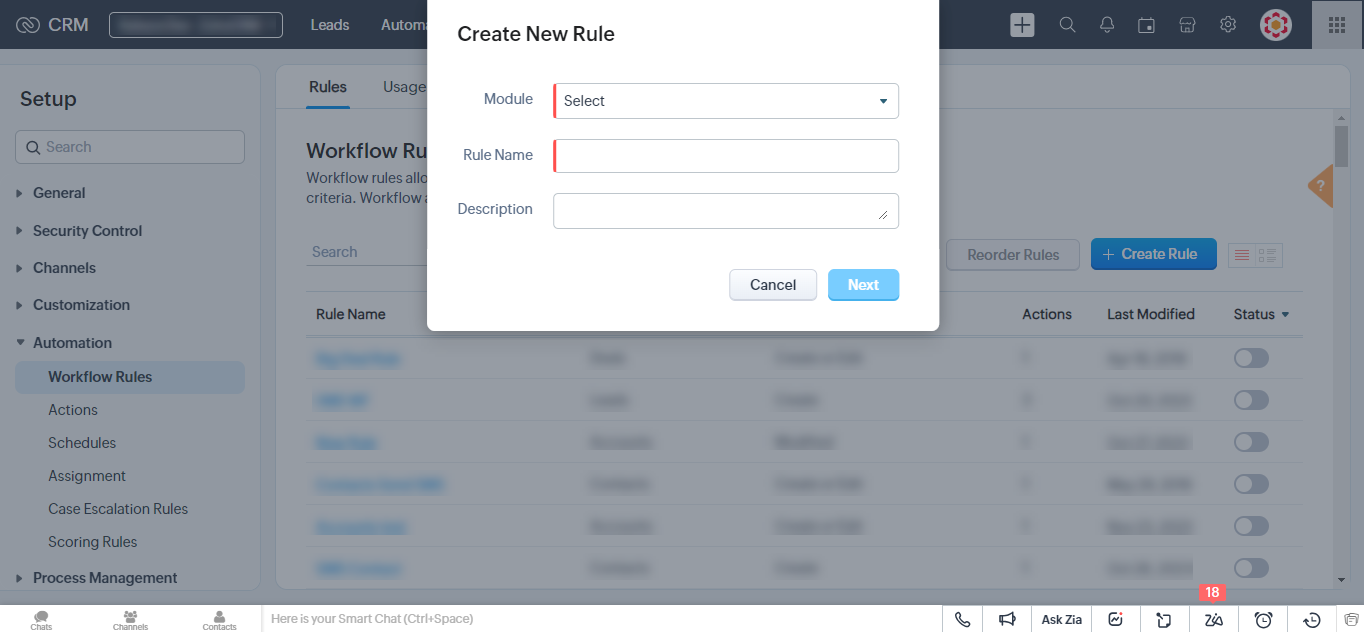
- Perform the following:
- Click the drop-down arrow next to the Module, and a supported list of modules appears. Select from Leads, Contacts, or Accounts. Kaleyra currently supports workflow rules for these three modules. For example, Leads module is selected.
- In the Rule Name field, enter the name for your workflow rule based on your choice. It is recommended to enter a name that is easy to remember based on the workflow action.
- (Optional) In the Description field, enter the description for your workflow rule.
- Click Next.
The WHEN option appears to configure the workflow rules.
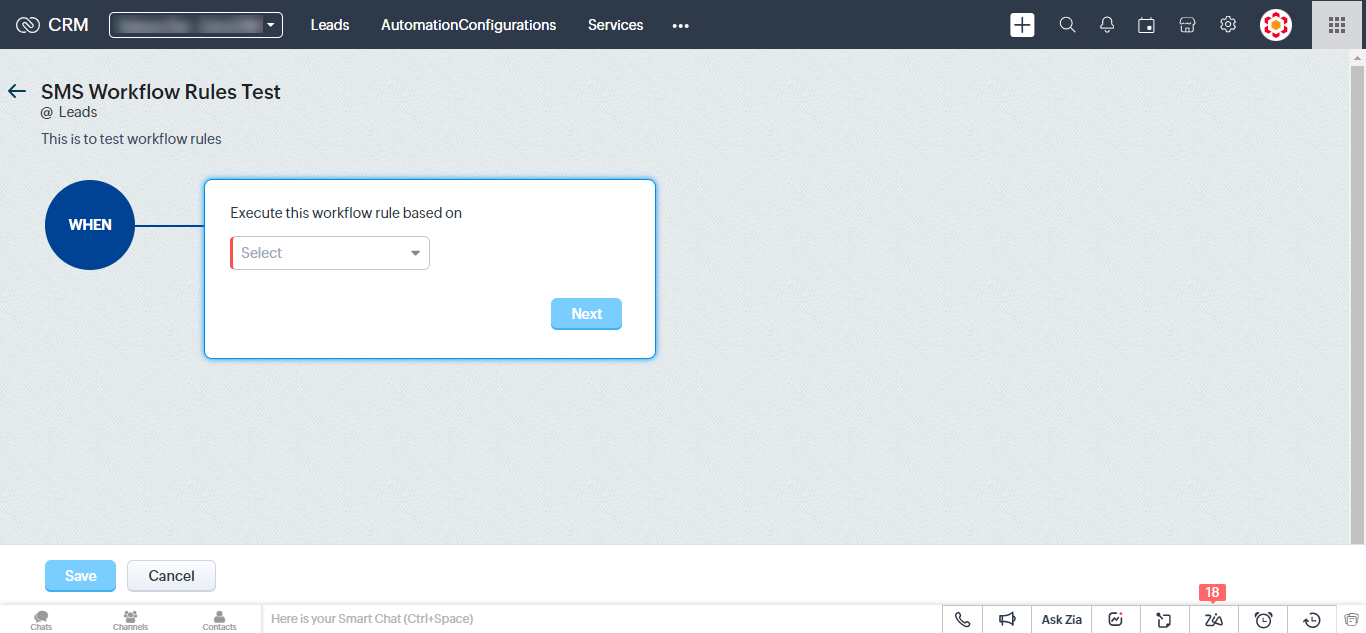
-
Click the drop-down arrow next to the Select field and a list of the following options appears:
- Record Action. For example, the Record Action is selected.
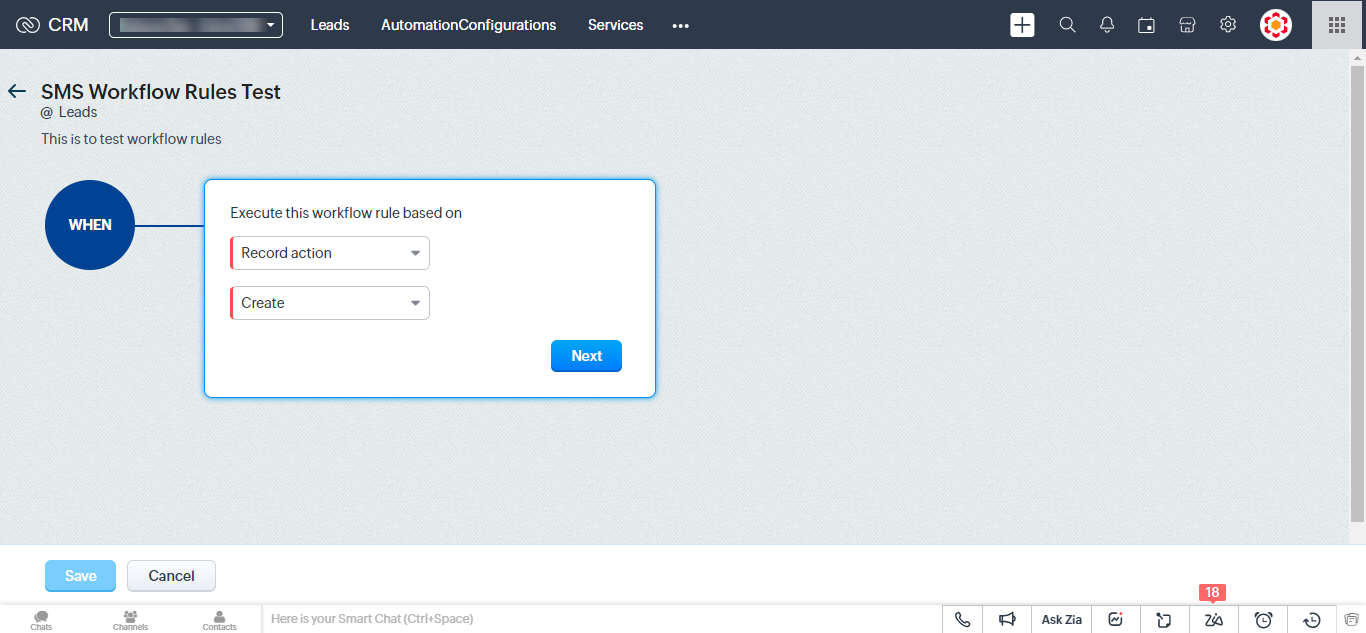
- Date/Time field.
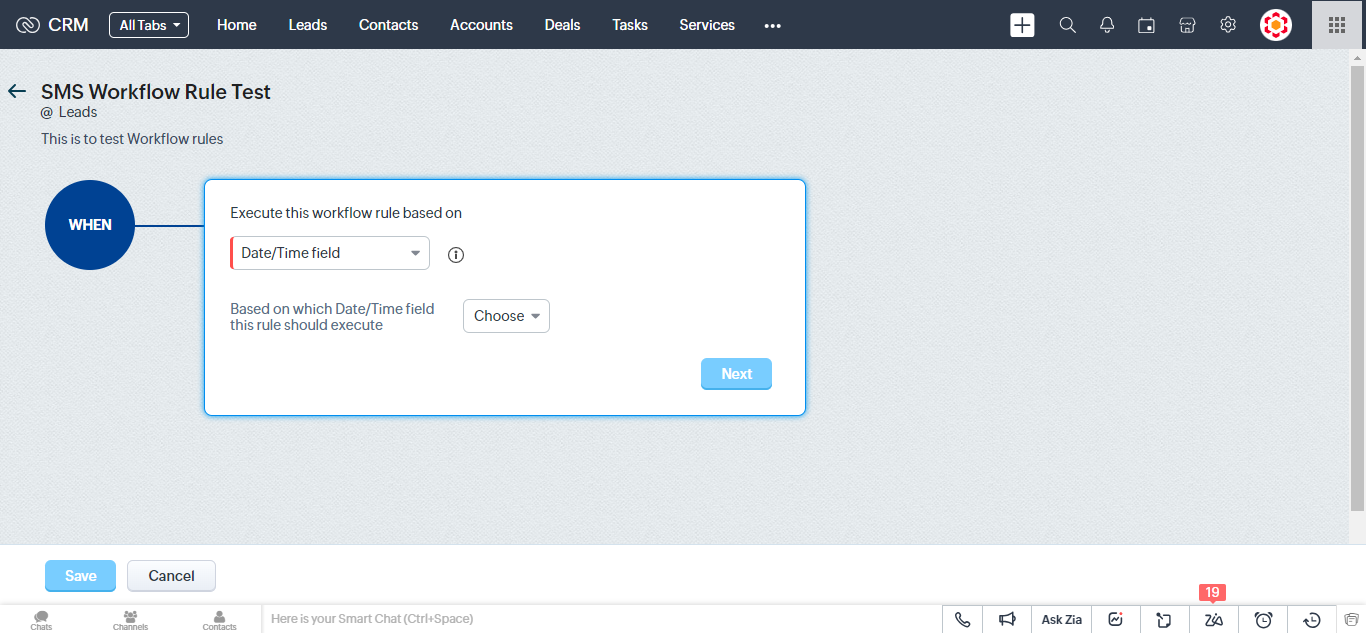
- Record Score.

- Record Notes.

-
Based on the Record Action selection, click the drop-down arrow next to the Create option, and the following options list appears to trigger the workflow when a new lead is:
- Created - Select the Create option to trigger the SMS when any new leads are created. For example, Create is selected.
- Created or Edited - Select the Create or Edit option to trigger the SMS when any lead is created or edited.
- Edited - Select the Edit option to trigger the SMS when any lead is edited.
- Deleted - Select the Delete option to trigger the SMS when any lead is deleted.
-
Click Next.
The CONDITION1 option appears to configure the workflow rules.
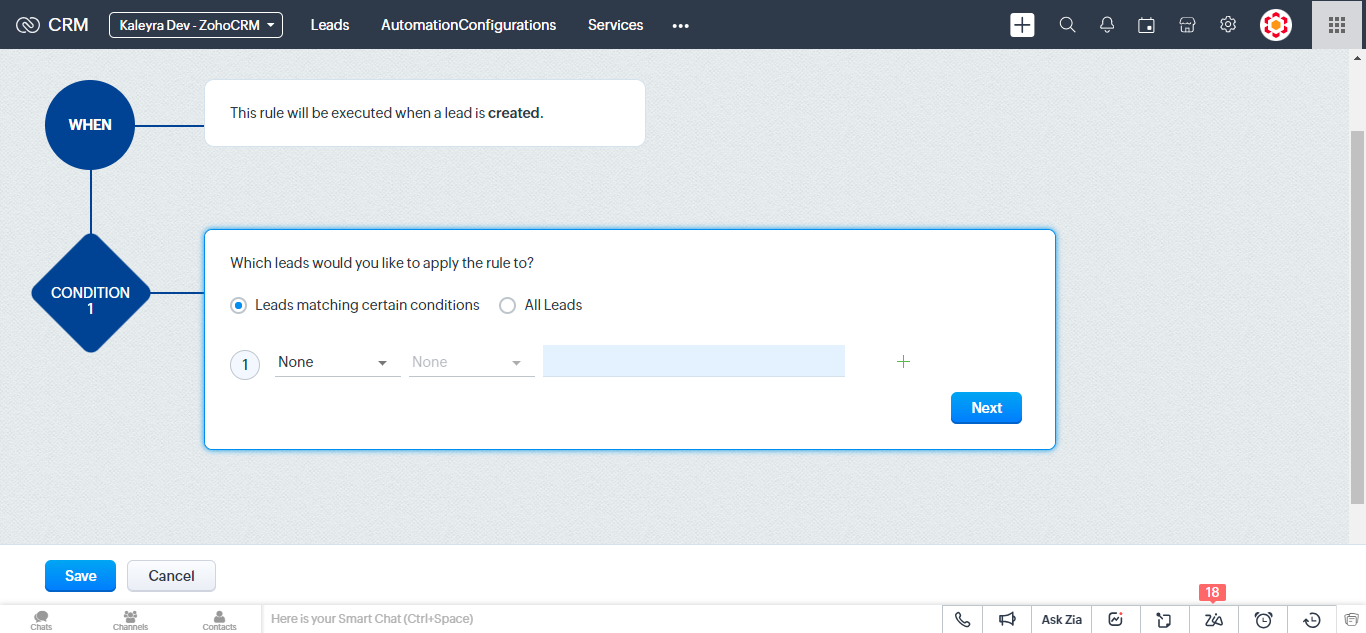
- Select any one of the following based on the record action for lead creation:
- Leads matching certain conditions - Select to send SMS to matched conditions based on your configured conditions. In the above example, this option is selected.
For example, in the first drop-down field, click and select First Name from the list. In the second drop-down field, click and select contains (set the condition) from the list. In the third field enter John. So when a new lead is created with a first name containing John, the SMS gets triggered. - All Leads - Select to send SMS to all the leads based on the WHEN.
- Click Next.
The Instant Actions appear.
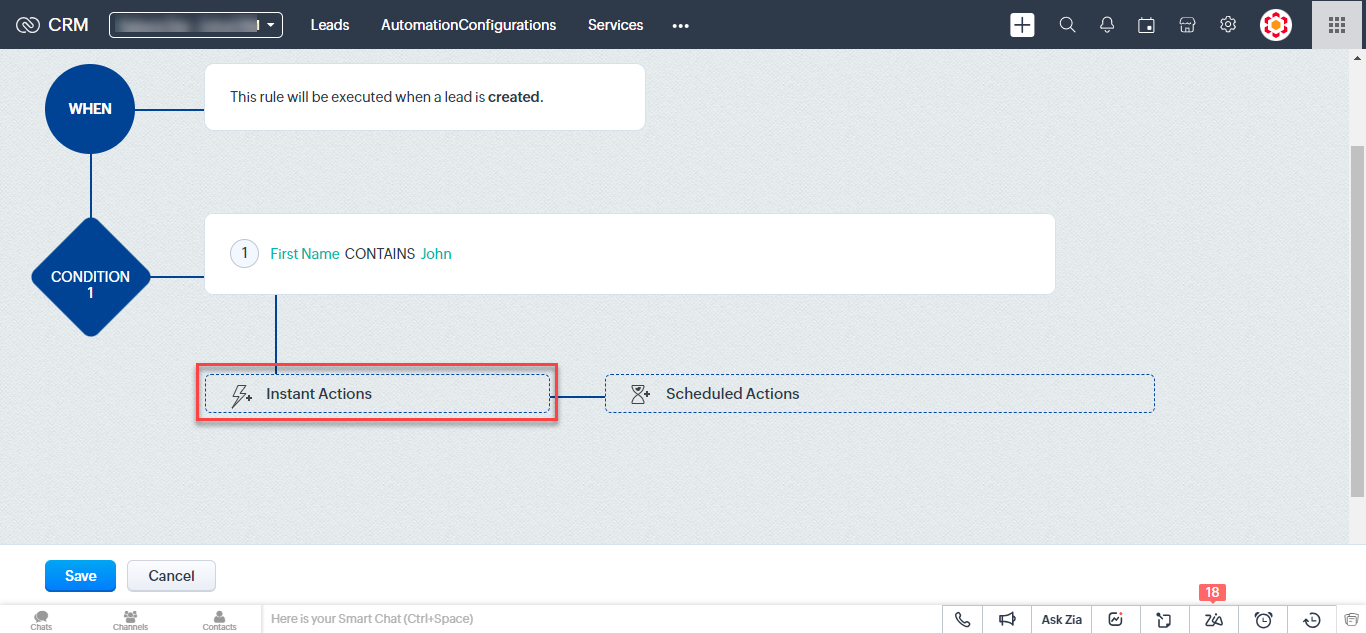
- Click the Instant Actions and a list of actions appears. Scroll down and hover over Custom Actions.
The list of available Custom Actions appears.
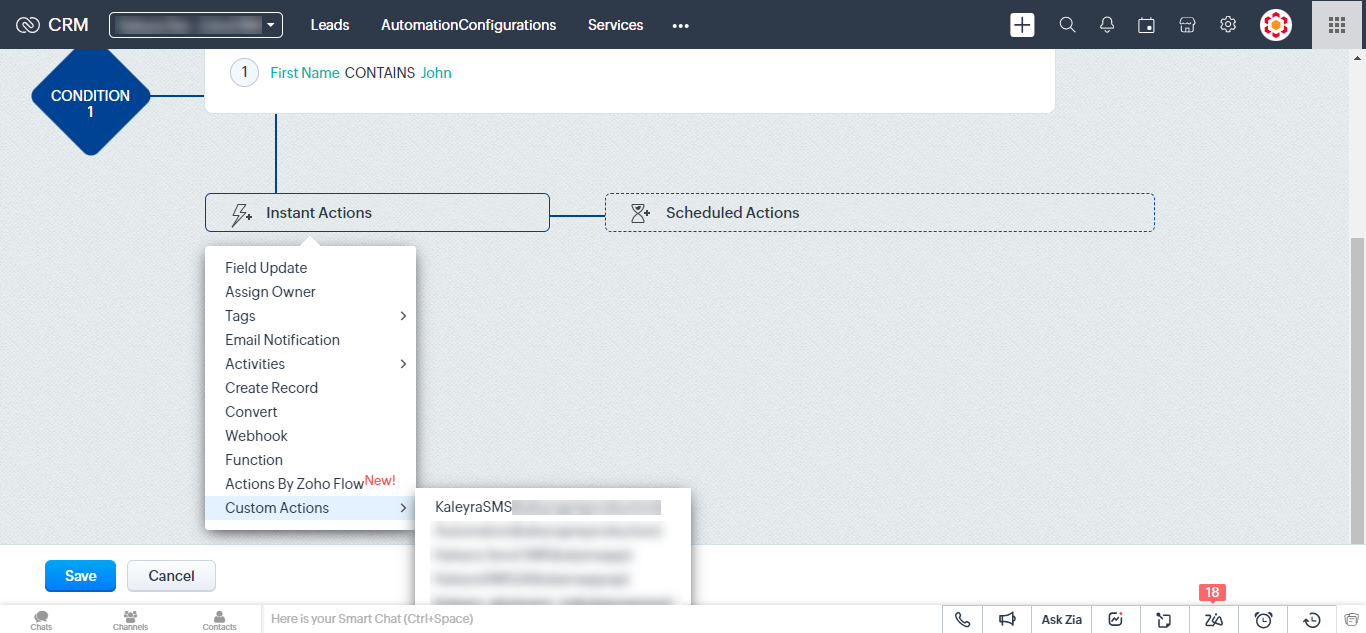
- Select Kaleyra SMS.
The Kaleyra SMS pop-up appears.
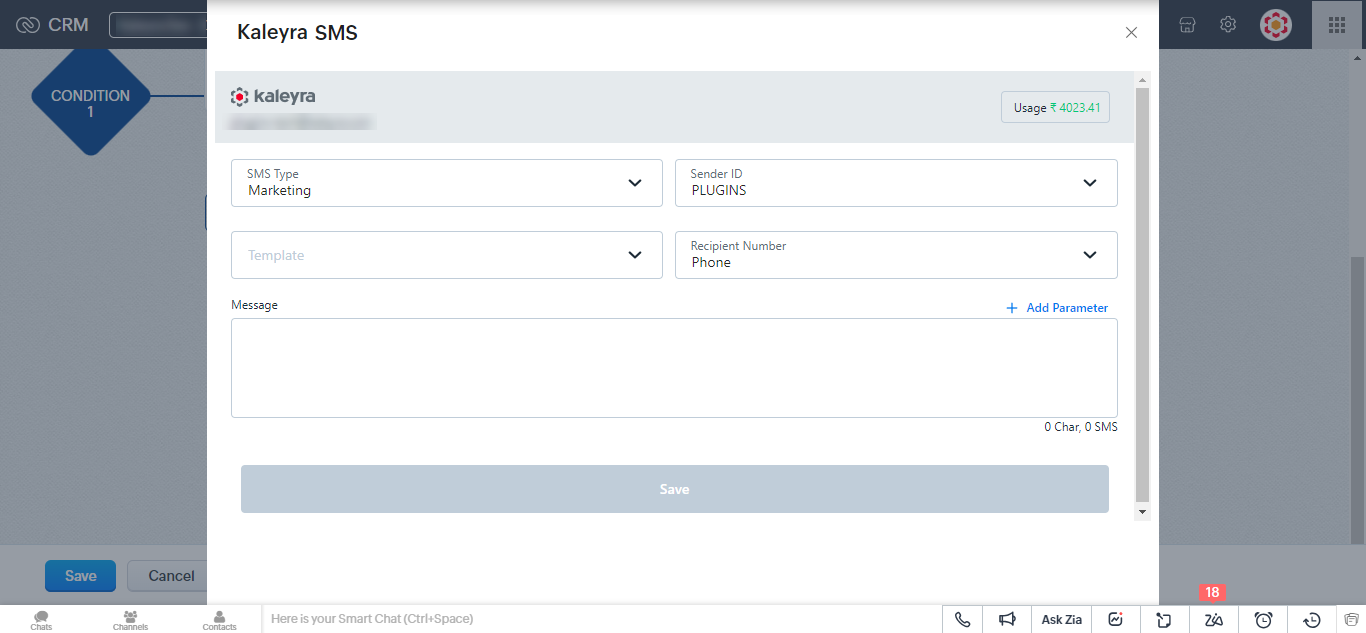
- To update the SMS fields or to get more information about the SMS fields follow step 2 to step 4 of the Send SMS to Leads, Contacts, or Accounts page.
Note:You can edit the message in the workflow rule by clicking the configured Instant Actions and then you will be redirected to the Kaleyra SMS page where you can update the message.
- Click Save.
A confirmation message appears.
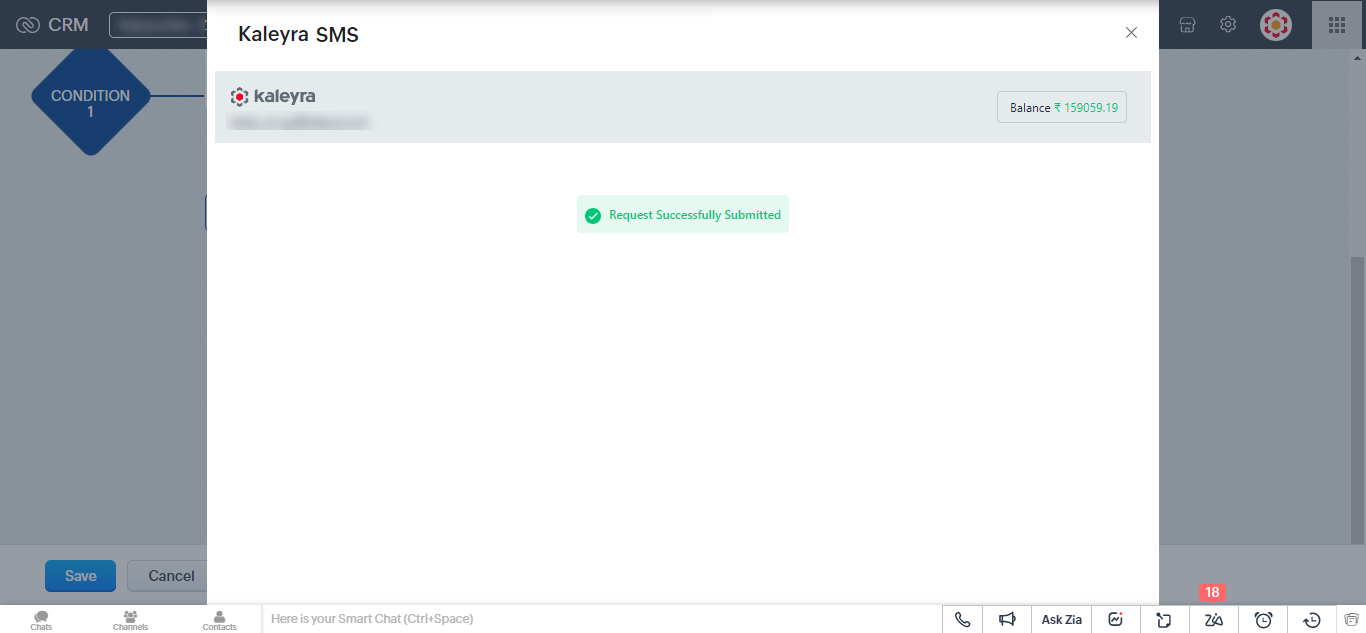
After the confirmation message, the page gets redirected to the Save and Associate pop-up.
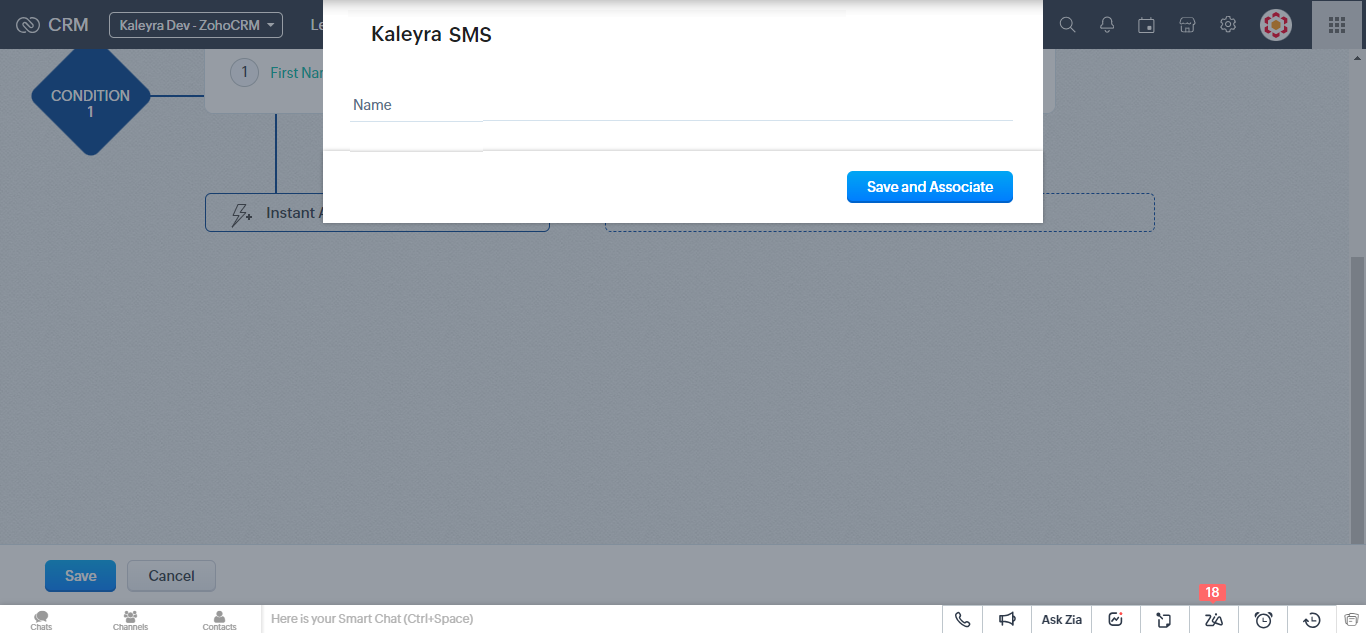
- In the Name field, enter the name for your reference for the Instant Actions and then click Save and Associate.
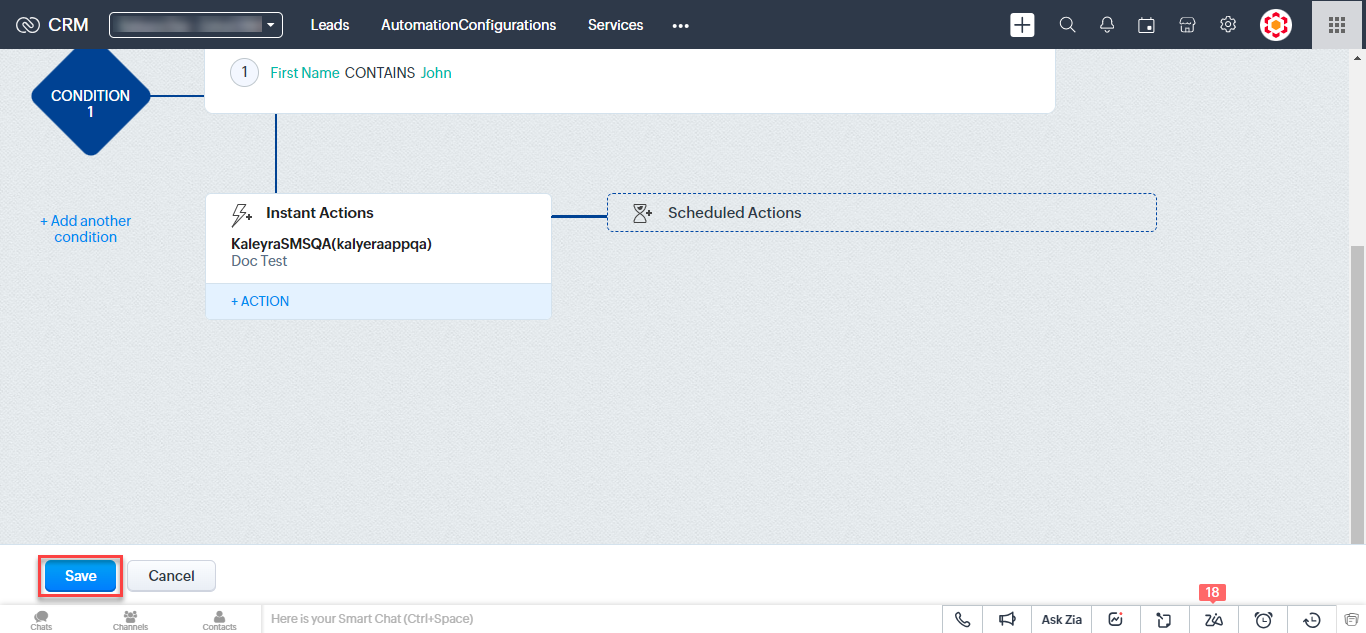
Note:The Scheduled Actions allows you to set the rule for message trigger time based on hours, days, or minutes. The message gets triggered based on the configured rules and scheduled time. To set the trigger time, click Scheduled Actions, in the Execute field, enter the value in the range of 1-99, and then select from Hour(s), Day(s), or Minute(s). Click Next to save the scheduled action.
- Click Save.
The list of Workflow Rules page appears.

Now, if any new Leads are created then an SMS is sent to the newly created Leads. In this example, if any new lead is created with the first name containing John, then the system will trigger the SMS through the Kaleyra plugin. You can view the SMS logs in Kaleyra.io by navigating to Channels > SMS > Logs. To view the logs in the Kaleyra plugin, see step 1 to step 6 of Configure Kaleyra SMS Settings with Zoho CRM.
View Workflow Rules Usage
You can view the workflow rules usage for your set conditions. For example, you have set the conditions for workflow rules for new leads, you can view the usage number of times the rule has been triggered, how many of those times the condition has been met, and how many actions have been generated with their outcome.
To view the workflow rules usage, perform the following steps:
- On the Zoho CRM account menu bar, click the Settings (gear) icon.
The Setup page appears.

- In the Automation section, click Workflow Rules.
The Rules tab detail appears.
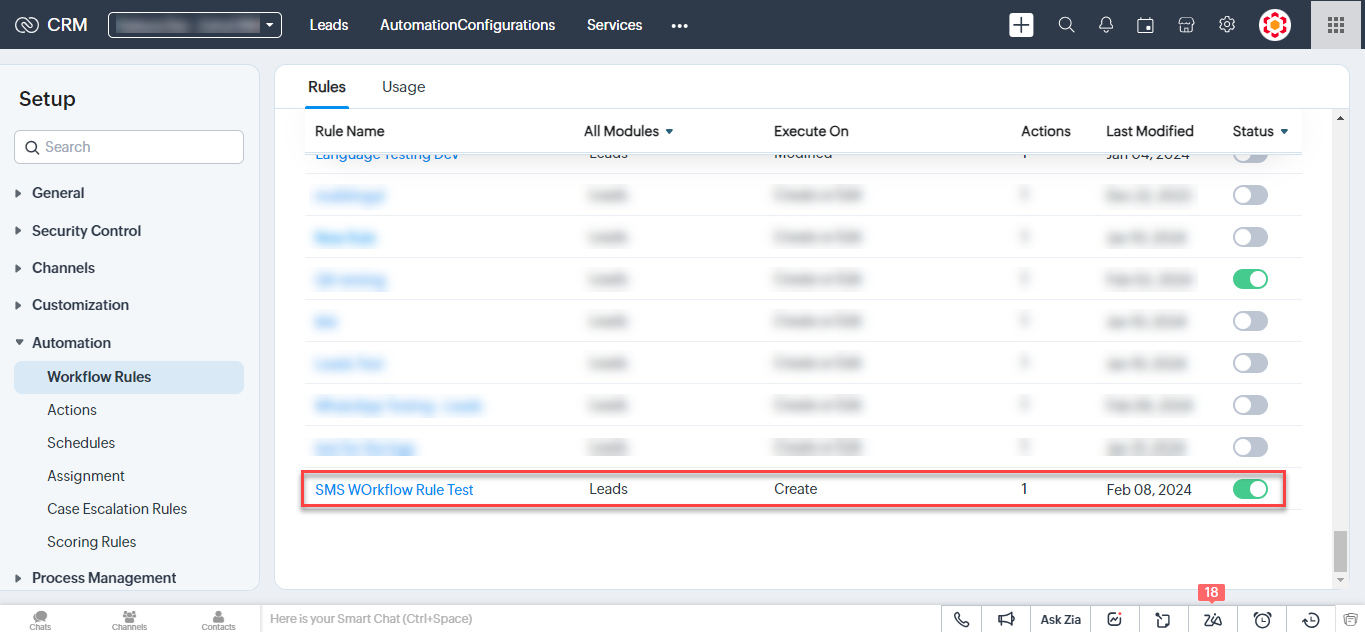
- Click the rule name for which you want to view the usage.
The rule page appears.
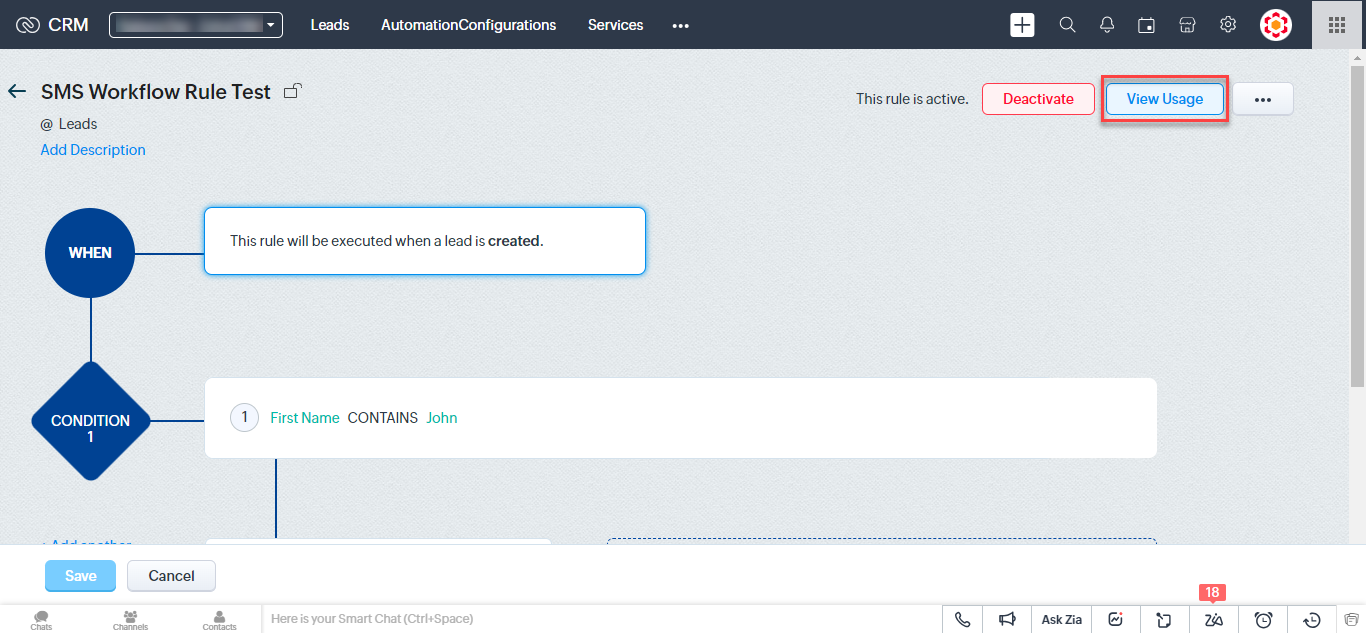
Note:You can deactivate the workflow rules by clicking on Deactivate. If you choose to deactivate the rule, then a confirmation message appears: Are you sure you want to deactivate this rule?.
Click Deactivate Now. The workflow rule gets deactivated.
- On the top right of the page, click the View Usage.
The usage details appear.
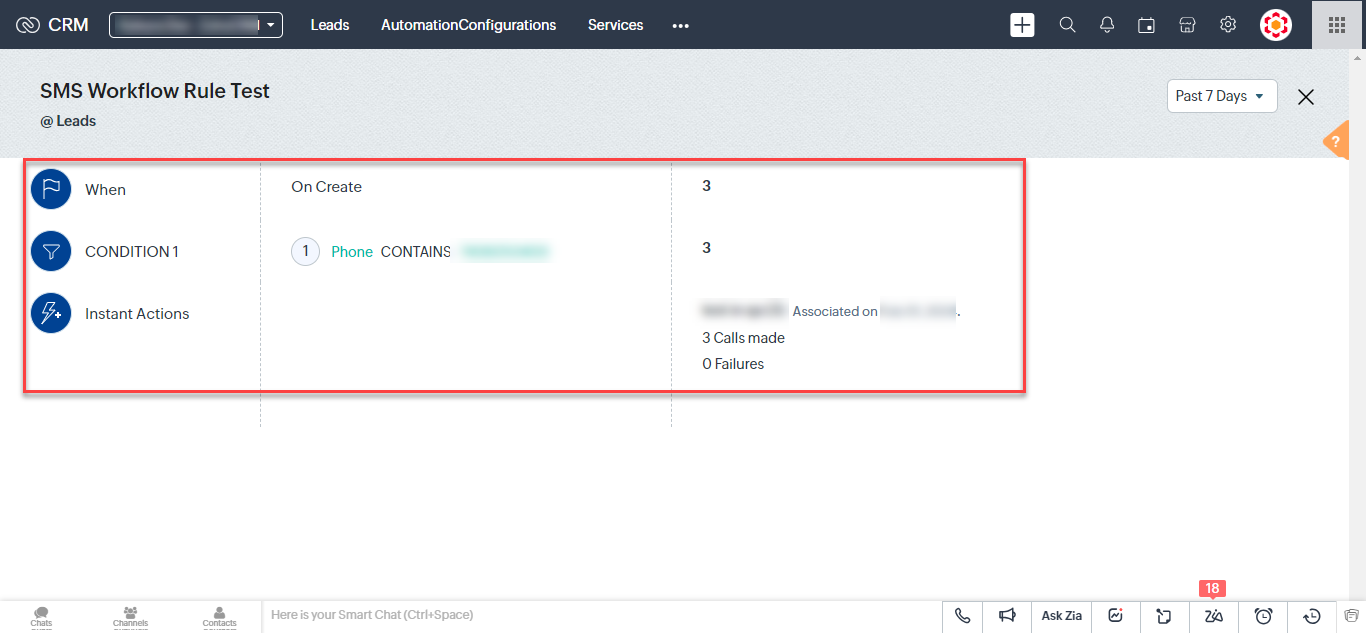
You can view the following usage information:
- The number of times the rule has been triggered, that is the number of times the “When” condition has been matched).
- The number of times the CONDITION 1 has been met.
- The number of times the action has been triggered.
- The number of times the action has failures.
Updated 6 months ago
